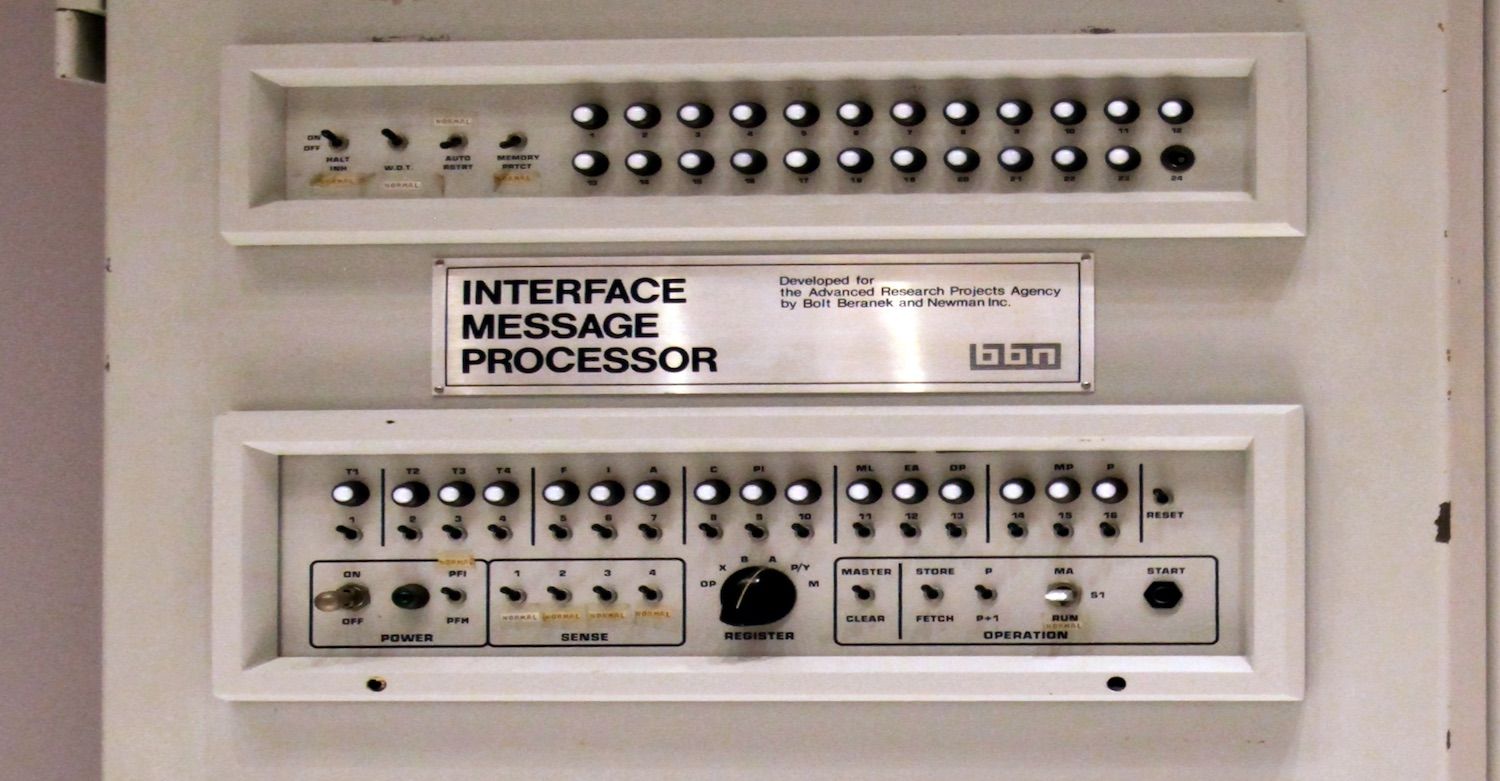How email came to be
Online conversations among the inventors of network mail are more fun and interesting than they have any right to be.


When telephones arrived on the scene in the late 1800s, many considered them inferior to the telegraph. “To employ the telephone, one just talked. A child could use it. For that very reason, it seemed like a toy…Business people thought it unserious,” writes James Gleick in The Information: A History, a Theory, a Flood. “That is what comes of analyzing technology in the abstract. As soon as people laid their hands on telephones, they worked out what to do. They talked.” It was the same with email.
In the late 60s, a group of now-legendary researchers received funding to study how then-nascent computers could be networked. To document their efforts and findings, the ARPANET researchers produced and published hundreds of what they called Requests For Comments (RFCs). On the face of it, the notes were supposed to propose protocols, code, syntax, and broad-stroke ideas to the rest of the group. But they ended up representing much more.
Amidst the attempts to codify and standardize computer networking, the researchers often wrote about digital communication “in the abstract.” And, by doing so, created a culture of collaboration and iteration that produced standards that have remained popular and relatively unchanged throughout decades of paradigm shifts online.
Rejecting kings and presidents
The man who first suggested the RFC format, Steve Crocker, explained in the third such document that “The content of a NWG (Network Working Group) note may be any thought, suggestion, etc. related to the HOST software or other aspect of the network.”
“Philosophical positions without examples or other specifics, specific suggestions or implementation techniques without introductory or background explication, and explicit questions without any attempted answers are all acceptable,” he insisted. “The minimum length for a NWG note is one sentence.”
We take this for granted today but in 1969 the prevailing approach to information sharing was far from Crocker’s proposed ideals, explaining in RFC3 that there was “a tendency to view a written statement as ipso facto authoritative, and we hope to promote the exchange and discussion of considerably less than authoritative ideas.” He was 25 at the time and wanted to change the way ARPANET researchers and, ultimately, all network users communicated.
“The language of the RFC was warm and welcoming. The idea was to promote cooperation, not ego.” Hafner and Lyon assert in Where Wizards Stay Up Late: The Origins of the Internet. “The first RFC set the style and inspired others to follow suit in the hundreds of friendly and cooperative RFCs that followed.”
Email would look nothing like it does today if it weren’t for Crocker’s more-opinions-less-ego approach to moving the ball down the field.
Building a tool to discuss said tool
The funny thing is, RFCs were primarily consumed as paper documents for years after the inaugural issue. Crocker would later reflect in RFC1000, “I never dreamed these notes would be distributed through the very medium we were discussing these notes. Talk about the Sorcerer’s Apprentice!” But network access was scarce as email slowly took shape, so people read printed instead of digital updates and collaborated offline.
“In the process of connecting machines and operating systems together, a great deal of rapport has been established between personnel at the various network node sites,” reads RFC33. “The resulting mixture of ideas, discussions, disagreements, and resolutions has been highly refreshing and beneficial to all involved.” So the group set out to make it easier to locate and contact colleagues across remote locations.
The solution was a 24-bit identifier, 16 bits for identifying the individual and 8 bits for their host’s location. This was not a silver bullet but a baby step. In the unfiltered language that makes NWG notes so enjoyable to mine, users complained about the “annoying” lack of timestamps on messages (RFC41) and the absence of “simple association between a message and its reply” (RFC60) that turned “flow control into nightmares.” A Network Meeting was scheduled and person-to-person message sending and storing was near the top of the itinerary.
The final lines of the meeting minutes read:
“Crocker: I think these meetings will turn out to be more important than we ever wanted them to be. I am more concerned with the long-term effects than the starting date [of a solution].”
A year later, Ray Tomlinson finalized the protocol that switched from 24-bit numerical identifiers to usernames and hostnames separated by an @ symbol. When it was ready he “sent a message to the rest of my group explaining how to send messages over the network. The first use of network email announced its own existence.”
Faster, cheaper, and egalitarian
Like the businesspeople who thought the telephone was a child’s toy, the people who took operational control over the network in 1975 wrote an official report that “The largest single surprise of the ARPANET program has been the incredible popularity and success of network mail.” They couldn’t comprehend why communication would be the most popular use of the network.
One survey found that less than two years after Tomlinson’s announcement to the group, email accounted for three-quarters of all network traffic! To the people using it daily, the reasons were obvious.
“In an ARPANET message, one could write tersely and type imperfectly, even to an older person in a superior position and even to a person one did not know very well, and the recipient took no offense," explains a 1978 report from the Institute of Electrical and Electronics Engineers. Crocker’s vision of unpolished, less-than-authoritative discourse had taken root.
Most messages were significantly longer than his one-sentence minimum, however, meaning that they were still printed and read when convenient. Headers for network mail were supposed to include postal addresses for both sender and recipient to help “a clerk to read and distribute [mail]…from a fan fold paper stack without effort.” Still, regardless of whether the words were printed on screen or paper, network mail far outperformed the postal service in terms of speed, cost, and distribution.
In true NWG fashion, researchers were sending each other messages long before the protocol had been finalized. If you read between the RFC lines, what seems to have pushed them to eventually standardize their Simple Mail Transfer Protocol (that we still use 40 years later!) were the things they wanted to do, but couldn’t without group adoption.
There was a request to create dialogue group identifications or group@hostname addresses as precursors to listservs and newsletters. Someone wanted to create an INTERRUPT header that would automatically “interrupt the Recipient if he happens to be logged in at a terminal” at the time of delivery, a shadow of today’s desktop (and mobile) notifications. And there seemed to be agreement around separate FROM: and SENDER: headers, to distinguish between the person who sent the email and the person who requested it was sent (e.g. an assistant sending on behalf of their boss, or a program sending a transactional message).
At the end of the day, what the researchers at ARPANET wanted was more people involved in discussions, more often. I think that’s a poignant reminder to those of us trying to survive today’s internet.
Embracing rough consensus
There are plenty of arguments for wishing that the network we log into now could be smaller, quieter, and more homogenous. I often feel the same way. But reading the unpolished, funny, and “abstract” RFCs written by people like Crocker keep me optimistic. Steve himself wrote in RFC33 that “we regard the human interaction as a valuable byproduct [of the network].” I, for one, agree.
Once the people at NWG got their hands on email, they knew what to do. They wrote. They conspired to bring more people into the fold. They built a protocol that to this day lets individual developers, authors, designers, musicians, teachers, coaches, creators, and countless others reach anyone who wants to hear from them.
And why did they build email? Tomlinson says “It seemed like a neat idea."